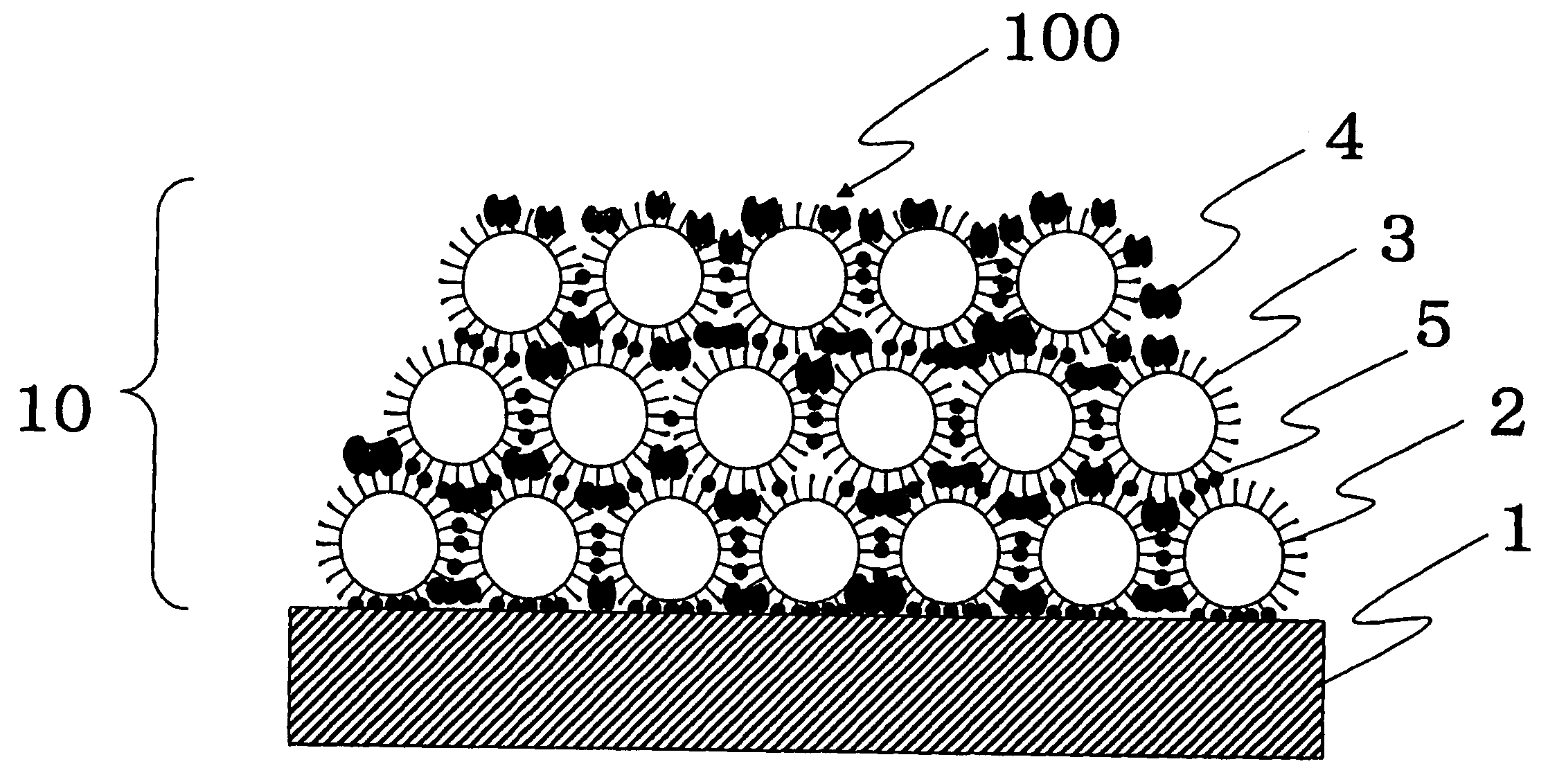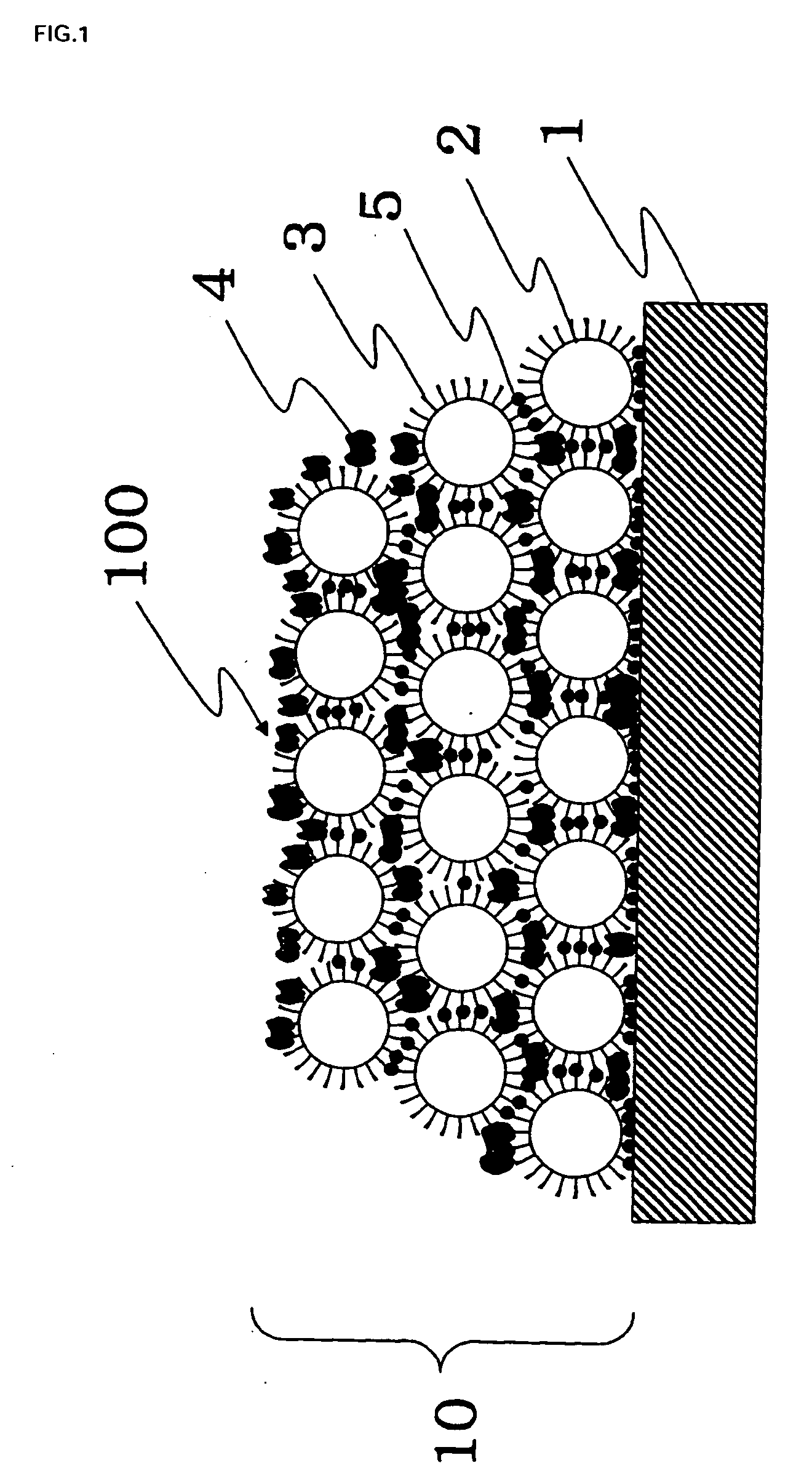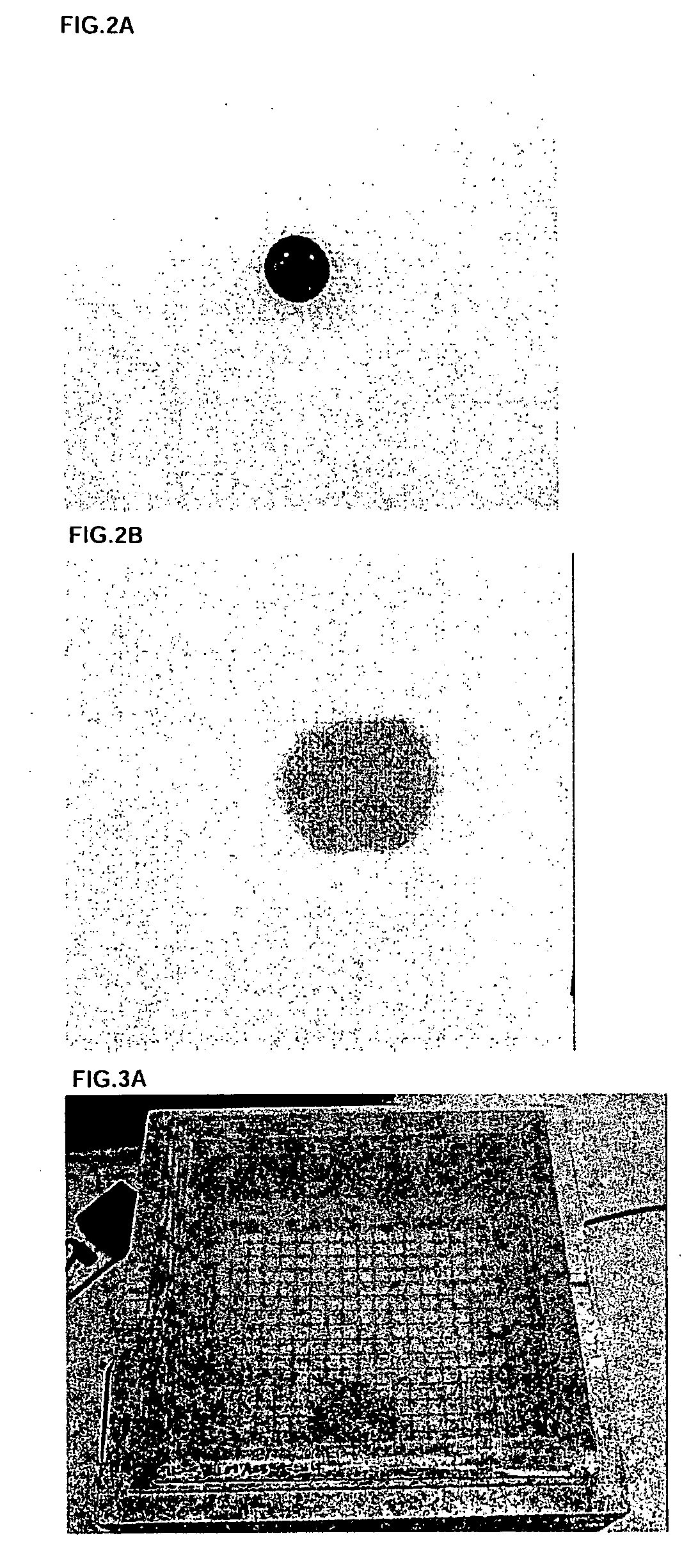Antifouling Composite Material
a composite material and antifouling technology, applied in the field can solve the problems of affecting the quality of antifouling composite materials, etc., to achieve excellent antifouling composite materials, easy to charge, and easy to deposit
- Summary
- Abstract
- Description
- Claims
- Application Information
AI Technical Summary
Benefits of technology
Problems solved by technology
Method used
Image
Examples
example 1
[0115]Ten percent by mass of inorganic fine particles, commercially available titanium dioxide particles (Ishihara Sangyo Kaisha, Ltd., TTO-S-1), were dispersed in methanol. The pH of the dispersion solution was adjusted to 4.0 with hydrochloric acid. The titanium dioxide particles were pulverized in a bead mill. The pulverized particles had an average particle size of 15 nm. A silane monomer having an unsaturated bond, 3-methacryloxypropyltrimethoxysilane (Shin-Etsu Chemical Co., Ltd., KBM-503), in amounts of 3.0% by mass to the inorganic fine particles was added to the resulting dispersion solution.
[0116]The dispersion solution was transferred into a flask equipped with a condenser tube and was heated under reflux in an oil bath for four hours. The silane monomer was chemically bound to the titanium dioxide fine particles by a dehydration condensation reaction. A binder component 4, (1) tetramethoxysilane (Shin-Etsu Chemical Co., Ltd., KBM-04), (2) hydroxyethyl acrylate (Kyoeisha ...
example 2
[0118]Example 2 is the same as Example 1 except that a water repellent substance, (1) stearyl acrylate (Kyoeisha Chemical Co., Ltd.) as an acryl monomer or (2) silicone oligomer (Matsushita Electric Industrial Co., Ltd., Frescera D), in amounts of 15% by mass to the silane monomer-coated inorganic fine particles was added as the binder component in the dispersion solution.
example 3
[0119]Inorganic fine particles, commercially available titanium dioxide fine particles (Tayca Corporation, MT-100HD), in amounts of 10.0% by mass of methanol and a silane monomer, 3-methacryloxypropyltrimethoxysilane (Shin-Etsu Chemical Co., Ltd., KBM-503), in amounts of 3.0% by mass to the fine particles was added. The pH of the resulting mixture was adjusted to 3.0 with hydrochloric acid. The titanium dioxide fine particles were pulverized in a bead mill. The pulverized particles had an average particle size of 18 nm. The dispersion solution was subjected to solid-liquid separation in a lyophilizer and was heated at 120° C. to chemically combine the silane monomer with the titanium dioxide fine particles by a dehydration condensation reaction. Ten percent by mass of the resulting surface-treated titanium dioxide fine particles were added to methanol. A binder component, an oligomer having a perfluoroalkyl group and a silanol group (Shin-Etsu Chemical Co., Ltd., KP-801M), in amount...
PUM
| Property | Measurement | Unit |
|---|---|---|
| size | aaaaa | aaaaa |
| temperature | aaaaa | aaaaa |
| particle size | aaaaa | aaaaa |
Abstract
Description
Claims
Application Information
 Login to View More
Login to View More - R&D
- Intellectual Property
- Life Sciences
- Materials
- Tech Scout
- Unparalleled Data Quality
- Higher Quality Content
- 60% Fewer Hallucinations
Browse by: Latest US Patents, China's latest patents, Technical Efficacy Thesaurus, Application Domain, Technology Topic, Popular Technical Reports.
© 2025 PatSnap. All rights reserved.Legal|Privacy policy|Modern Slavery Act Transparency Statement|Sitemap|About US| Contact US: help@patsnap.com



